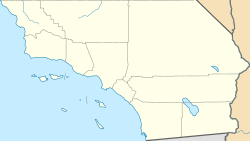This article needs additional citations for verification .(December 2012) |
| Ground Equipment Facility J-36A | |
|---|---|
| Part of 1951: | |
| Locations | |
| Site information | |
| Type | radar station |
| Code | ADC: LP-39, P-39 USGS: D-4-66-SC JSS: J-36A |
| Controlled by | |
| Location | |
 | |
| Coordinates | 32°58′37″N118°33′10″W / 32.97694°N 118.55278°W (AFS) [2] 32°53′04.95″N118°27′04.05″W / 32.8847083°N 118.4511250°W (ARSR-4) [2] |
| Site history | |
| Built | 1951 |
| In use | ADC: 1951-1960 USGS: 1966 USN: 1972-present |
| Garrison information | |
| Garrison | 670th Aircraft Control and Warning Squadron |
Ground Equipment Facility J-36A (San Clemente Island Air Force Station until 1960) is a Federal Aviation Administration (FAA) radar station of the Joint Surveillance System (JSS) in the Western Air Defense Sector (WADS) of NORAD.

